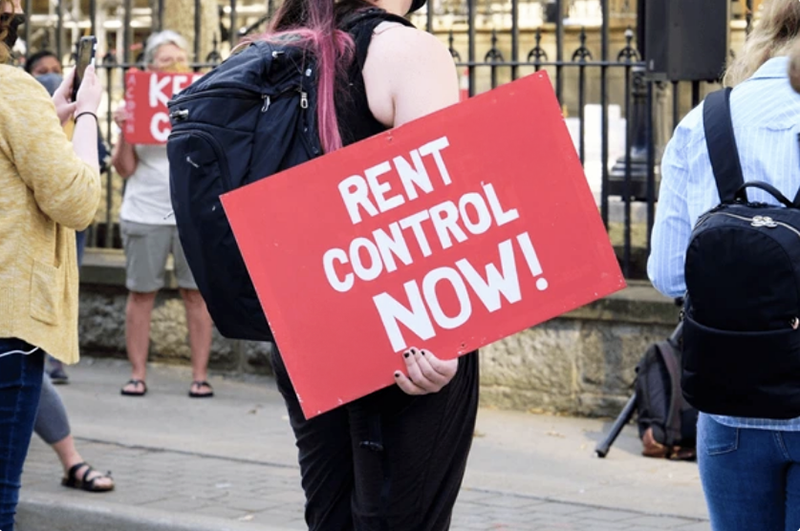Rent control is a policy that limits how much a landlord can raise the rent on a property each year. It’s meant to protect tenants from sudden or extreme rent increases and to help keep housing affordable in cities where prices are rising quickly. Rent control laws vary from one place to another, but the idea behind them is the same: to give renters stability and prevent displacement caused by rapidly increasing rents.
Below is a deeper look at how rent control works, where it applies, and why it continues to spark debate between tenants and landlords.
What Rent Control Does
Rent control places a legal cap on how much rent can go up over time. In some cities, that might mean landlords can only raise rent by a small percentage each year—often tied to inflation or a set rate. For example, if rent is $1,500 a month and the local rule allows a 4% increase, the landlord can only raise the rent by $60 the following year.
Rent control laws often come with rules about when and how rent increases can happen. Many require landlords to give tenants advance written notice before raising the rent. Some cities even restrict rent increases entirely during certain conditions, such as economic downturns or declared emergencies.
The idea is not to freeze rent forever but to make changes predictable and fair, giving tenants a chance to plan for them.
Where Rent Control Exists
Not every city or state has rent control. It’s more common in large, high-demand urban areas where housing costs have risen faster than wages. New York City, Los Angeles, San Francisco, and parts of New Jersey are well-known examples.
In these places, rent control is often part of a broader housing policy that includes tenant protection programs and affordable housing initiatives.
However, many states have laws that ban or limit local governments from creating rent control programs. For instance, states like Texas, Arizona, and Colorado generally prohibit rent control. Others, like Oregon and California, have passed statewide rent caps that limit annual rent increases but still allow for moderate growth.
Who Qualifies for Rent Control
Rent control doesn’t cover every rental unit. Most programs apply only to older buildings, since the goal is to protect long-term residents rather than newer developments. For example, some laws apply only to buildings constructed before 1995 or 1980, depending on the city.
Single-family homes, condos, and luxury apartments are often exempt. So are new buildings, to encourage developers to keep constructing new housing rather than avoid the market altogether.
Tenants also usually have to meet certain conditions to stay protected. For instance, rent control might only apply while the same tenant remains in the unit. Once the tenant moves out, the landlord can reset the rent to market value for the next renter—a rule known as “vacancy decontrol.”
Benefits for Tenants
Rent control can make a big difference for renters, especially in expensive cities. It gives them the ability to stay in their homes for years without worrying about unpredictable rent hikes.
Stable rent means stable lives—families can stay in the same schools, workers can remain close to their jobs, and communities don’t lose residents to rising prices. Rent control also helps seniors and low-income tenants stay housed in neighborhoods they might otherwise be priced out of.
For many people, rent control turns renting into something closer to homeownership in terms of stability. Knowing that rent will rise slowly each year gives peace of mind and financial predictability.
Concerns from Landlords
While rent control helps tenants, landlords often argue it creates financial strain and discourages investment. If rent is tightly capped, landlords may not have enough income to cover rising costs for maintenance, repairs, insurance, or property taxes. Over time, that can lead to aging buildings falling into disrepair.
Some landlords also claim that rent control discourages new housing construction. Developers may be less likely to build rental properties if they think profits will be limited by regulation. This can make housing shortages worse in the long run, which drives up prices for units not under rent control.
Economists often debate whether rent control helps or hurts the housing market overall. Some studies show it keeps housing affordable for long-term tenants, while others find it reduces the overall supply of available rentals.
The Ongoing Debate
The argument over rent control usually comes down to finding a balance. Tenants want fair and stable rent, while landlords need enough flexibility to cover costs and maintain properties. Cities that adopt rent control often pair it with other housing programs, like tax breaks for new developments or subsidies for affordable housing, to address both sides.
Ultimately, rent control is one piece of a much bigger puzzle. It can protect tenants from being pushed out of their homes, but it’s not a permanent solution to the housing crisis. The real challenge is increasing the supply of affordable homes while still protecting those who rent today.




